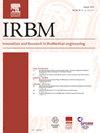Evaluation of the Performance of Blueback Physio® Medical Device in the Management of Patients Suffering from Chronic Low Back Pain: Randomized Clinical Trial
IF 4.2
4区 医学
Q1 ENGINEERING, BIOMEDICAL
引用次数: 0
Abstract
Background
Chronic low back pain (CLBP) is one of the leading causes of disability in the world population. In 2017, in central Europe and North America, prevalence of CLBP was 12.51% and 9.80% respectively. The rehabilitation of the abdominal muscles, and notably the deep transversus abdominis, plays an important role in the management of CLBP in physiotherapy.
Objectives
The main objective of this study is to prove that a biofeedback device of the transversus abdominis, named Blueback Physio, developed by the Blueback company, improves the management of patients suffering from this pain.
Design
The clinical trial is designed as a prospective, monocentric, comparative, open-label randomized and parallel group study.
Method
41 subjects were included in this study and divided into two groups, one control group, in which the subjects used the device without visual biofeedback, and one intervention group, where the subjects used the complete biofeedback. The study included patients cared in day or full hospitalization in FSEF Rennes-Beaulieu Clinic, France, as part of the PRESDO program (“programme de prévention secondaire des dorso-lombalgies”).
Results
We found that patients who use visual biofeedback of the transverse abdominis muscle are more likely to (i) quickly learn to voluntarily contract this muscle and (ii) have better control of this muscle compared to patients who do not use it. Finally, the PRESDO program improves overall patient well-being.

Blueback Physio®医疗器械治疗慢性腰痛的疗效评价:随机临床试验
背景:慢性腰痛(CLBP)是世界人口致残的主要原因之一。2017年,中欧和北美CLBP患病率分别为12.51%和9.80%。在物理治疗中,腹肌,尤其是腹深横肌的康复在CLBP的治疗中起着重要的作用。本研究的主要目的是证明由Blueback公司开发的一种名为Blueback Physio®的横腹生物反馈装置可以改善患有这种疼痛的患者的管理。临床试验设计为前瞻性、单中心、比较、开放标签、随机、平行组研究。方法将41名受试者分为两组,对照组使用无视觉生物反馈装置,干预组使用完全生物反馈装置。该研究包括在法国FSEF Rennes-Beaulieu诊所接受日间或全面住院治疗的患者,作为PRESDO方案的一部分(“后腰痛预防方案”)。结果我们发现,使用腹横肌视觉生物反馈的患者更有可能(i)快速学会自愿收缩该肌肉,(ii)与不使用该肌肉的患者相比,对该肌肉有更好的控制。最后,PRESDO项目改善了患者的整体健康状况。
本文章由计算机程序翻译,如有差异,请以英文原文为准。
求助全文
约1分钟内获得全文
求助全文
来源期刊

Irbm
ENGINEERING, BIOMEDICAL-
CiteScore
10.30
自引率
4.20%
发文量
81
审稿时长
57 days
期刊介绍:
IRBM is the journal of the AGBM (Alliance for engineering in Biology an Medicine / Alliance pour le génie biologique et médical) and the SFGBM (BioMedical Engineering French Society / Société française de génie biologique médical) and the AFIB (French Association of Biomedical Engineers / Association française des ingénieurs biomédicaux).
As a vehicle of information and knowledge in the field of biomedical technologies, IRBM is devoted to fundamental as well as clinical research. Biomedical engineering and use of new technologies are the cornerstones of IRBM, providing authors and users with the latest information. Its six issues per year propose reviews (state-of-the-art and current knowledge), original articles directed at fundamental research and articles focusing on biomedical engineering. All articles are submitted to peer reviewers acting as guarantors for IRBM''s scientific and medical content. The field covered by IRBM includes all the discipline of Biomedical engineering. Thereby, the type of papers published include those that cover the technological and methodological development in:
-Physiological and Biological Signal processing (EEG, MEG, ECG…)-
Medical Image processing-
Biomechanics-
Biomaterials-
Medical Physics-
Biophysics-
Physiological and Biological Sensors-
Information technologies in healthcare-
Disability research-
Computational physiology-
…
 求助内容:
求助内容: 应助结果提醒方式:
应助结果提醒方式:


